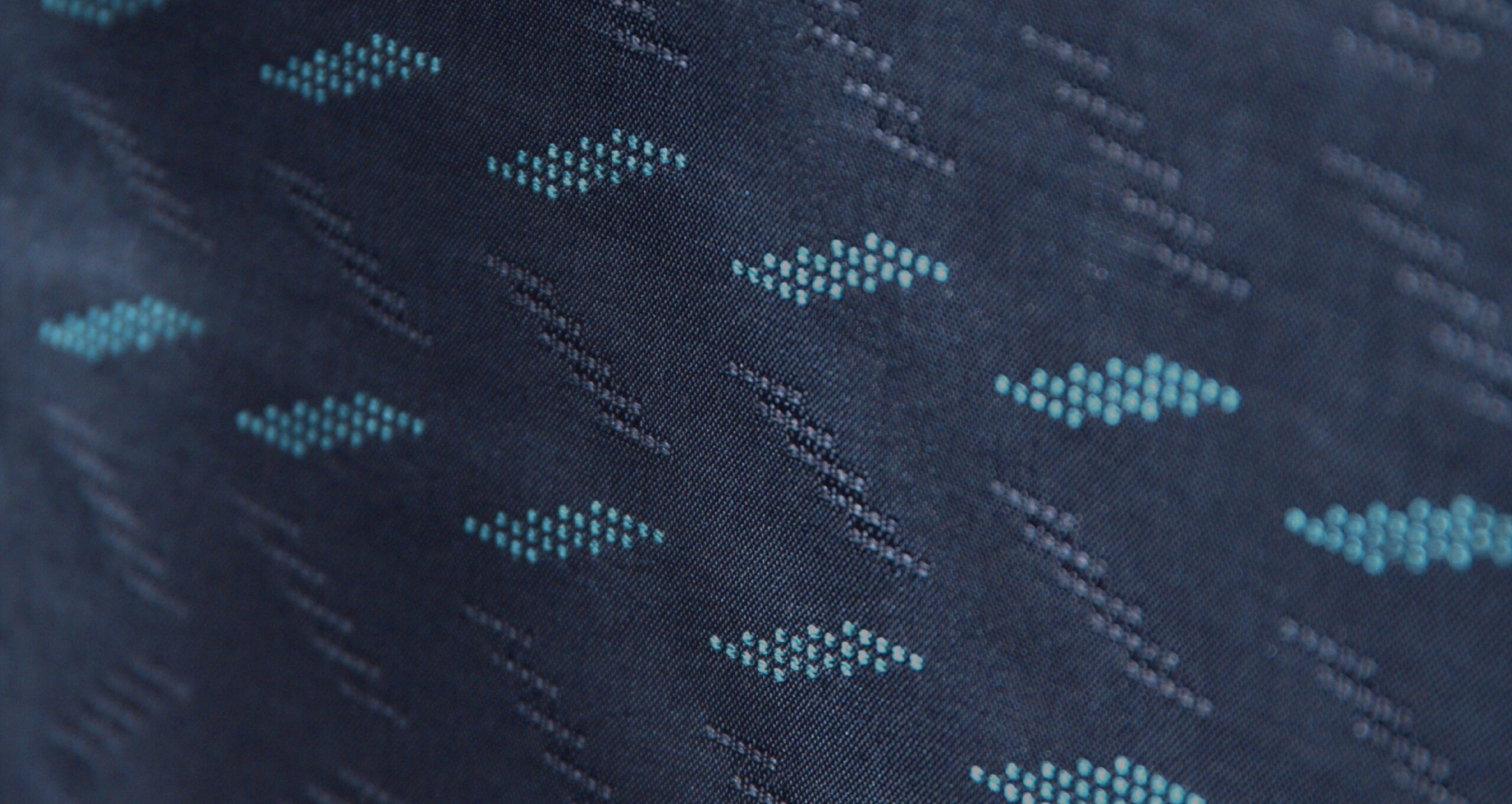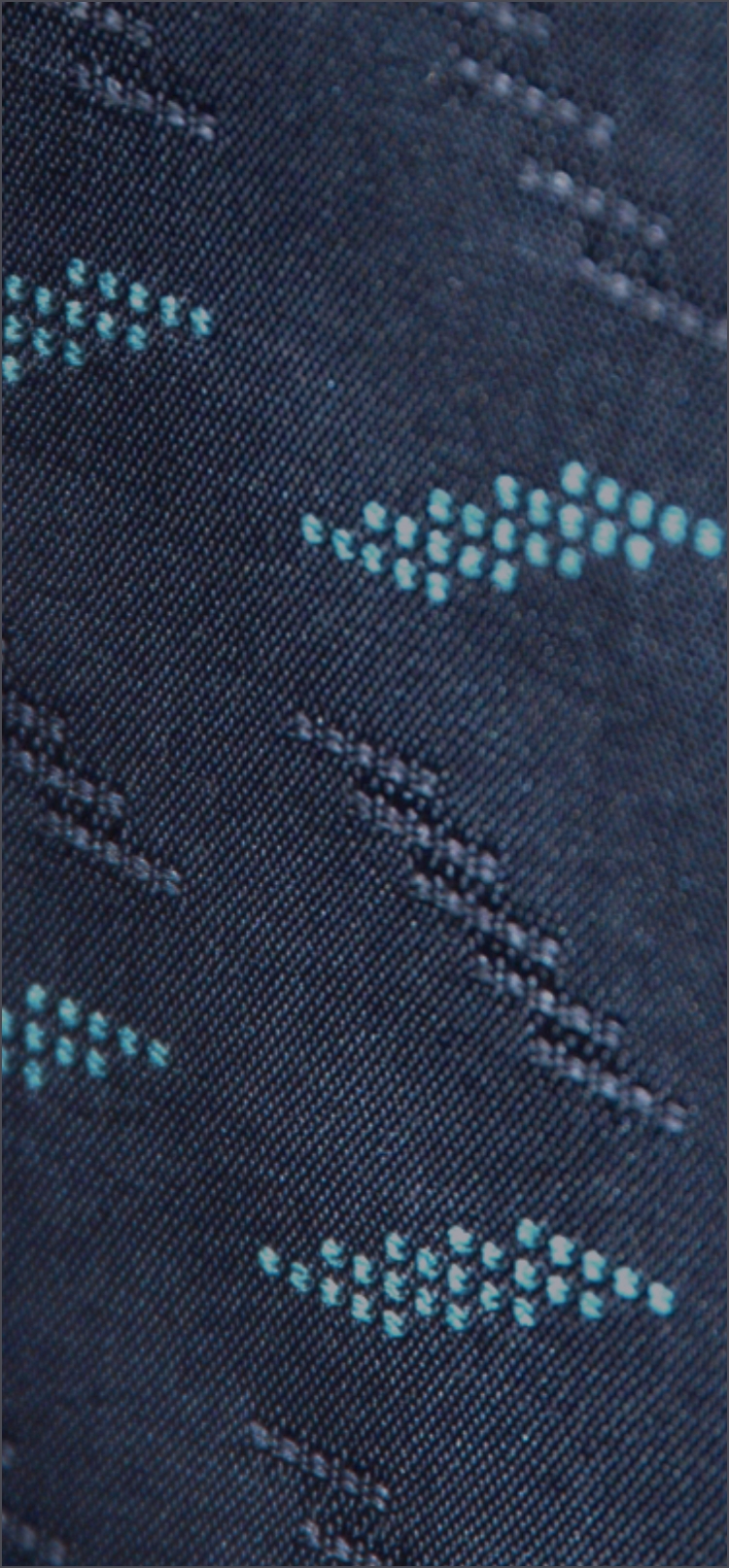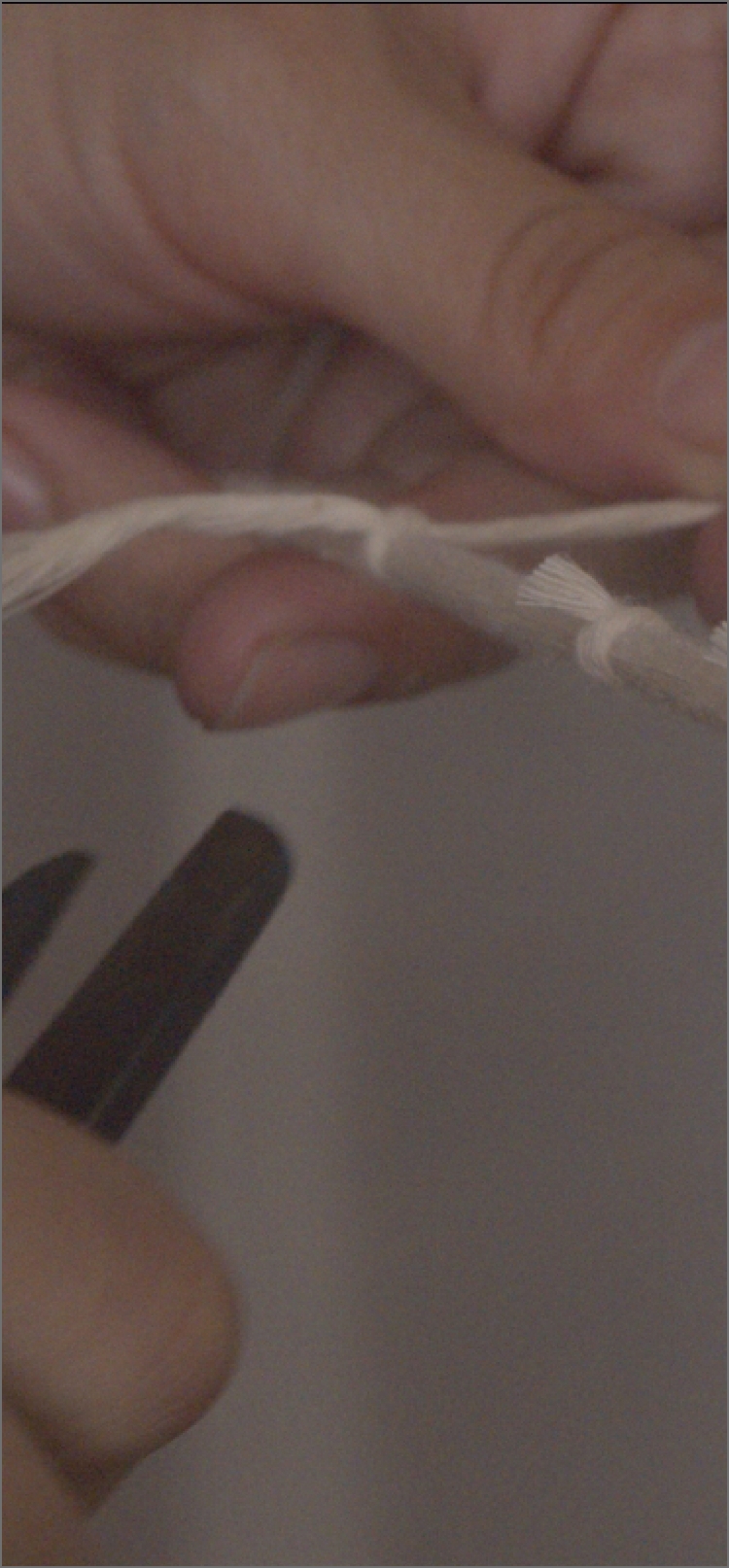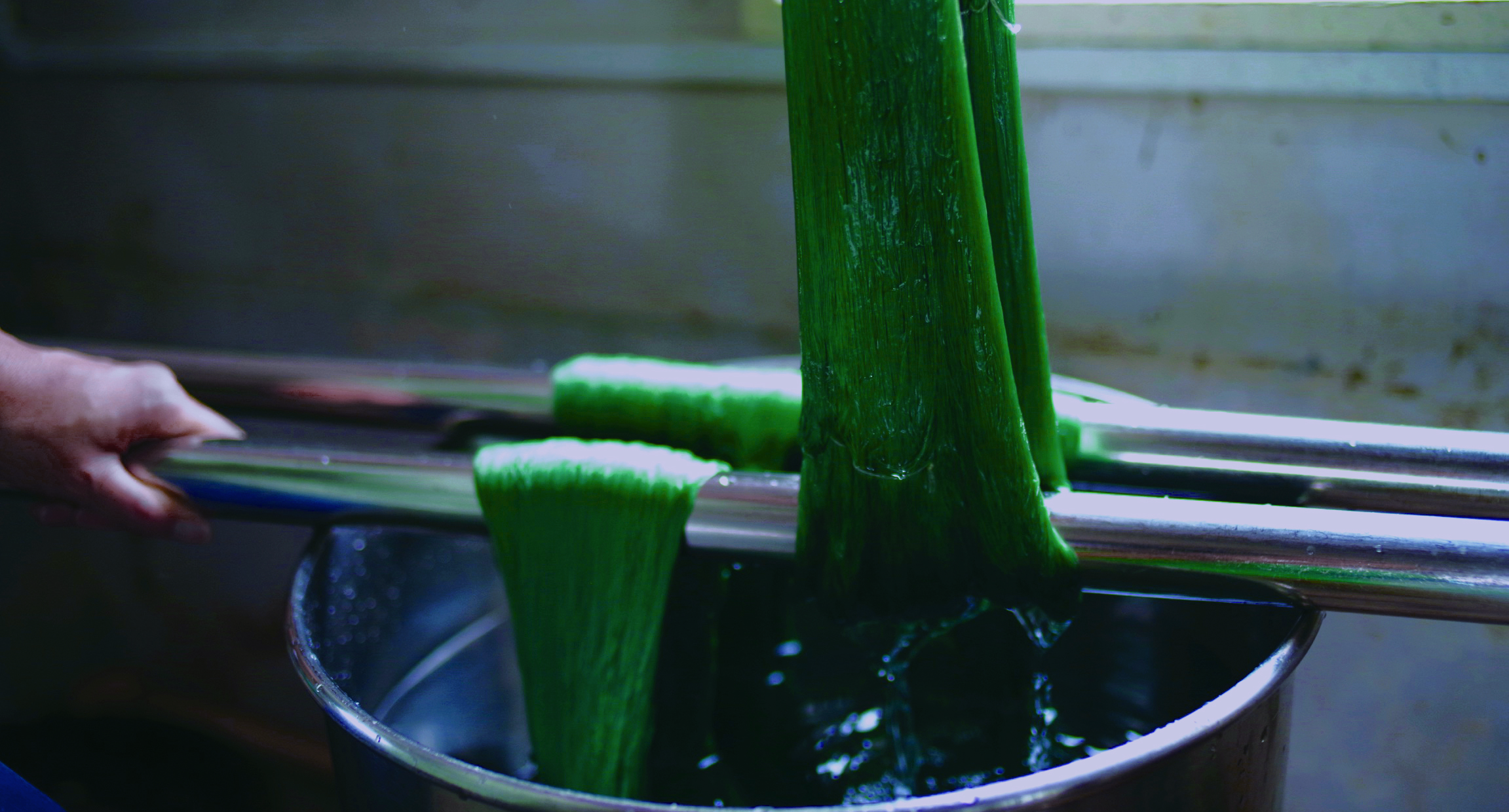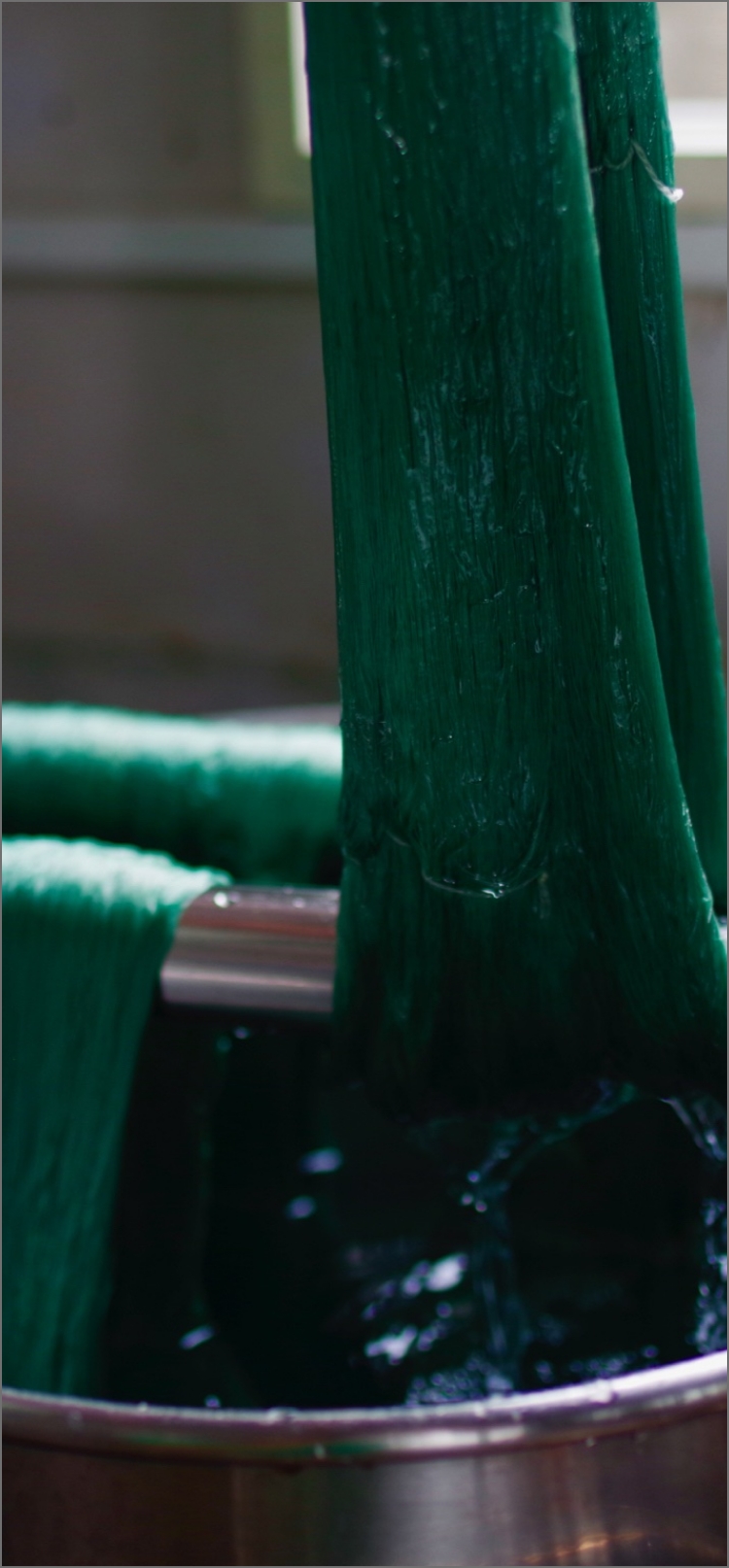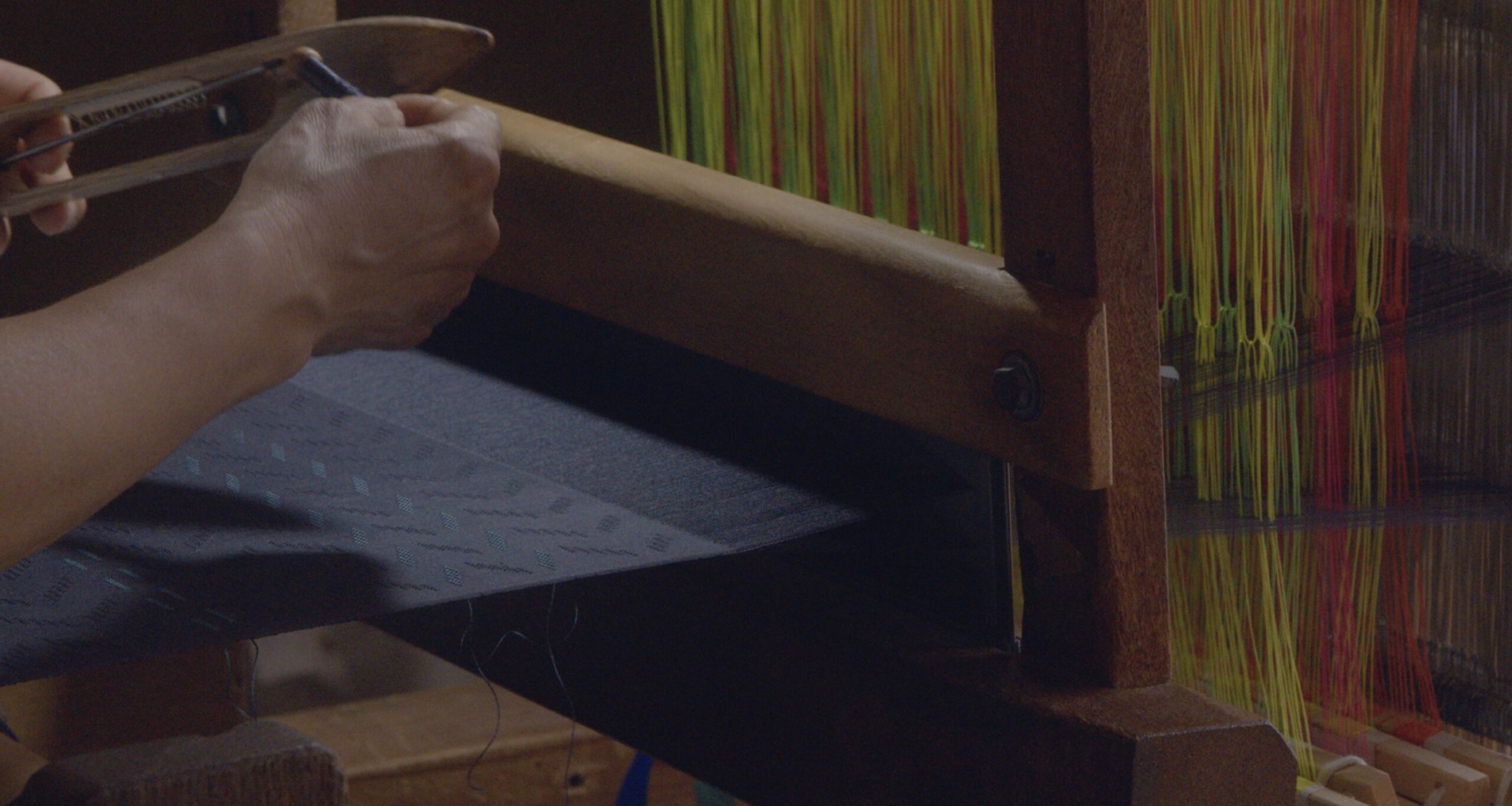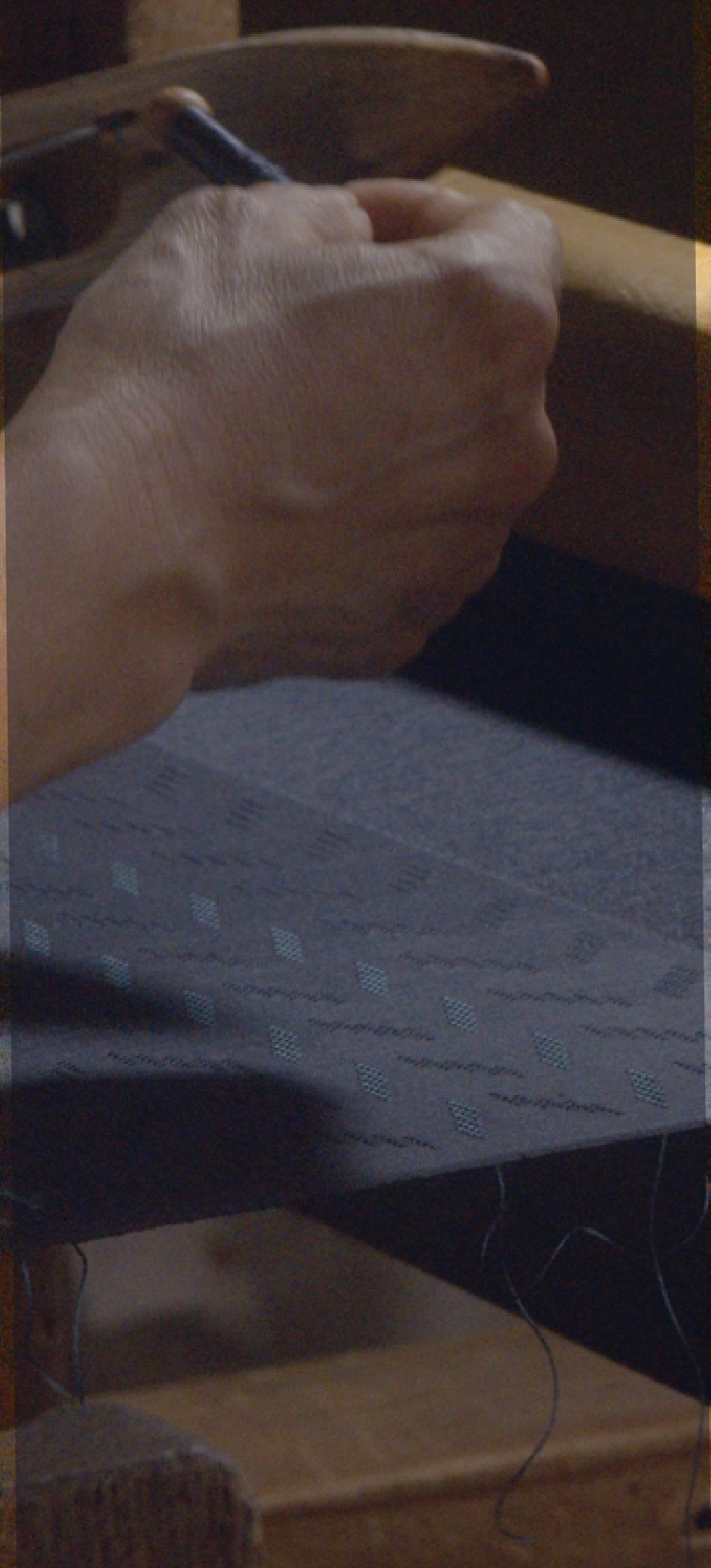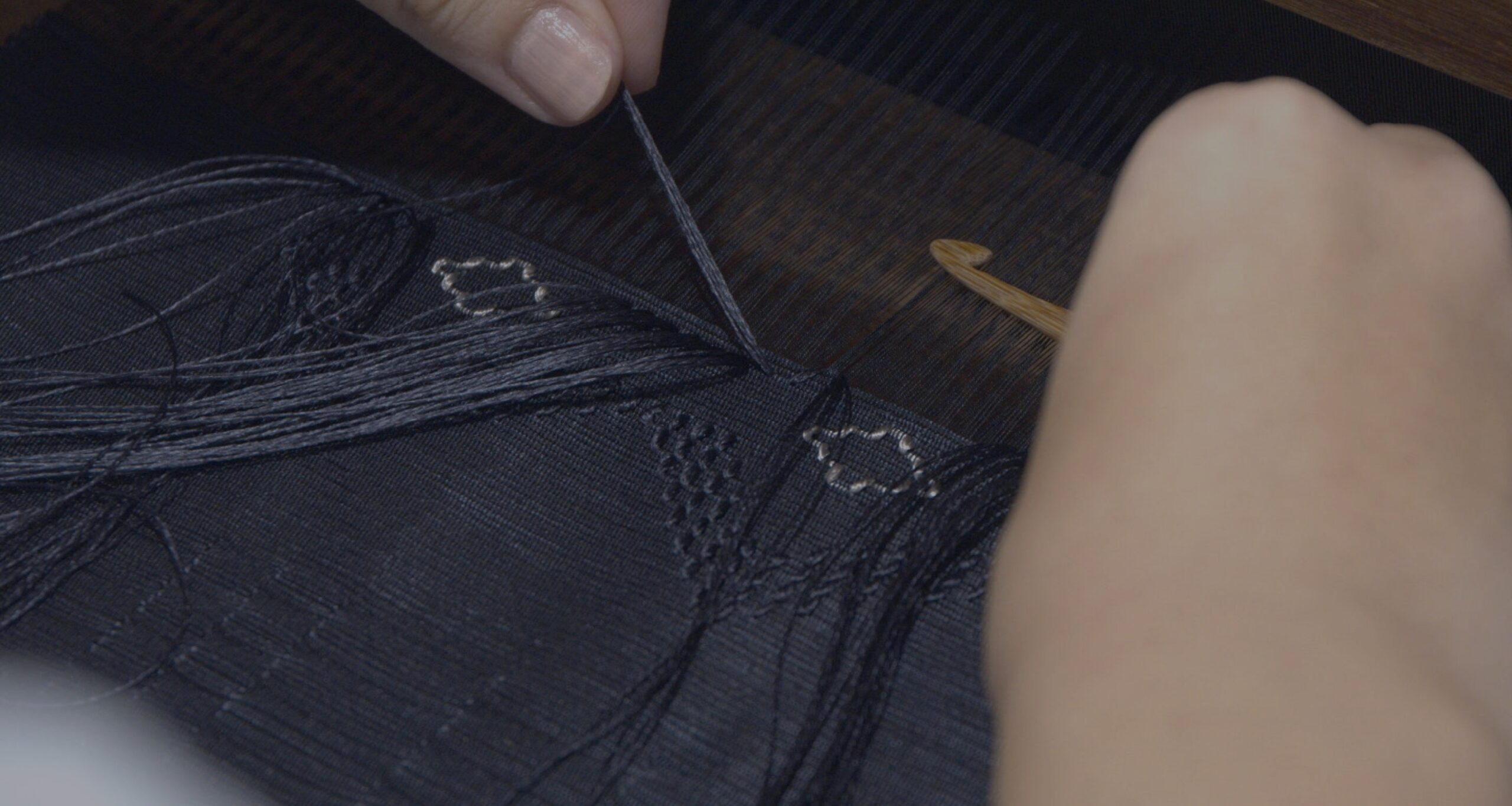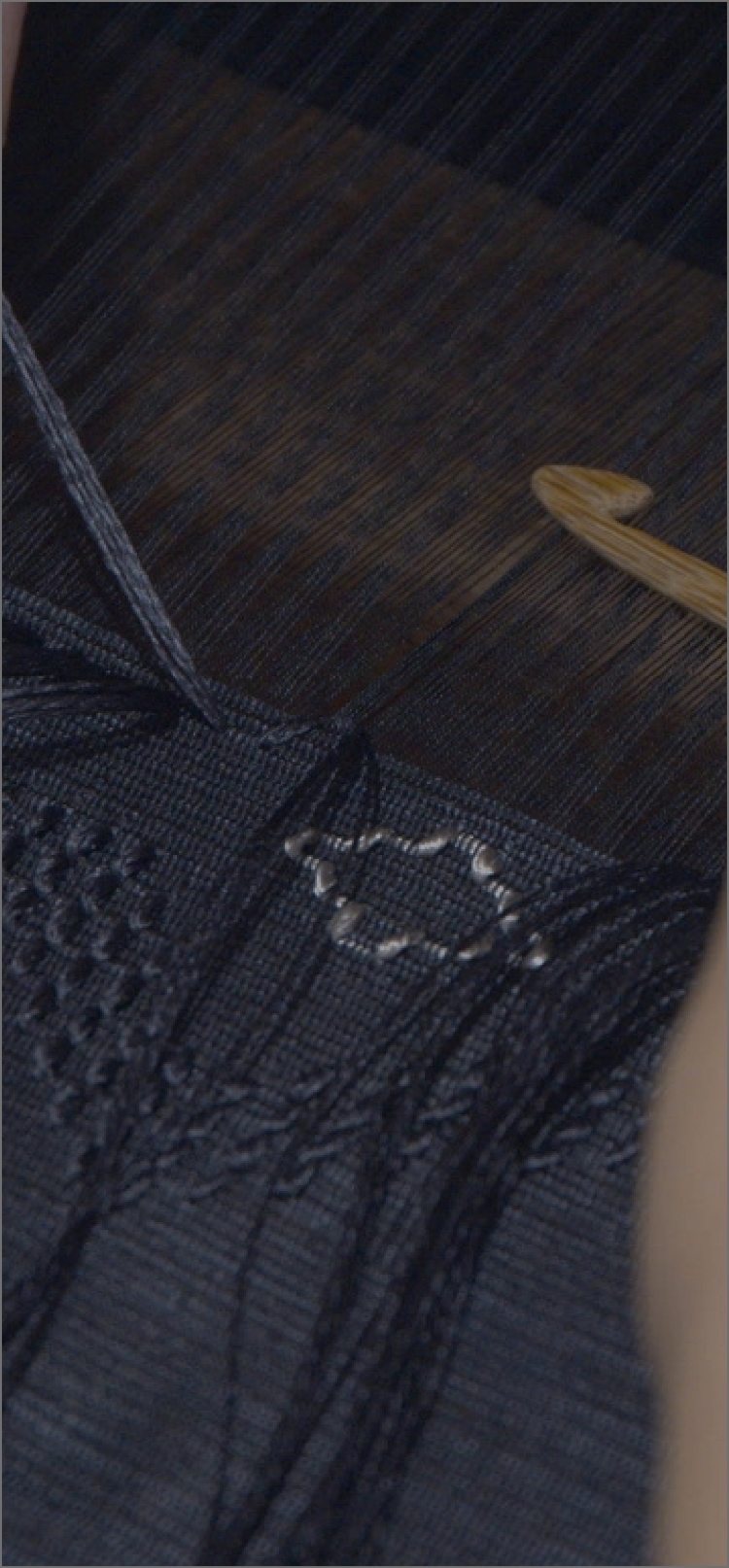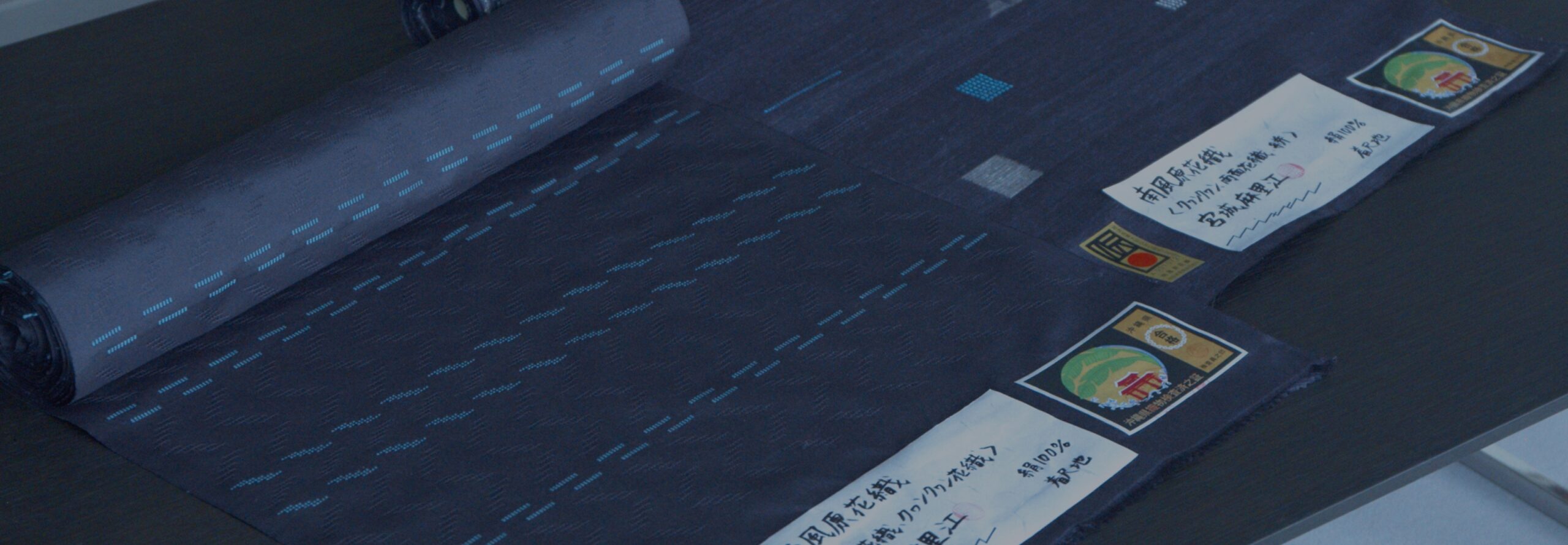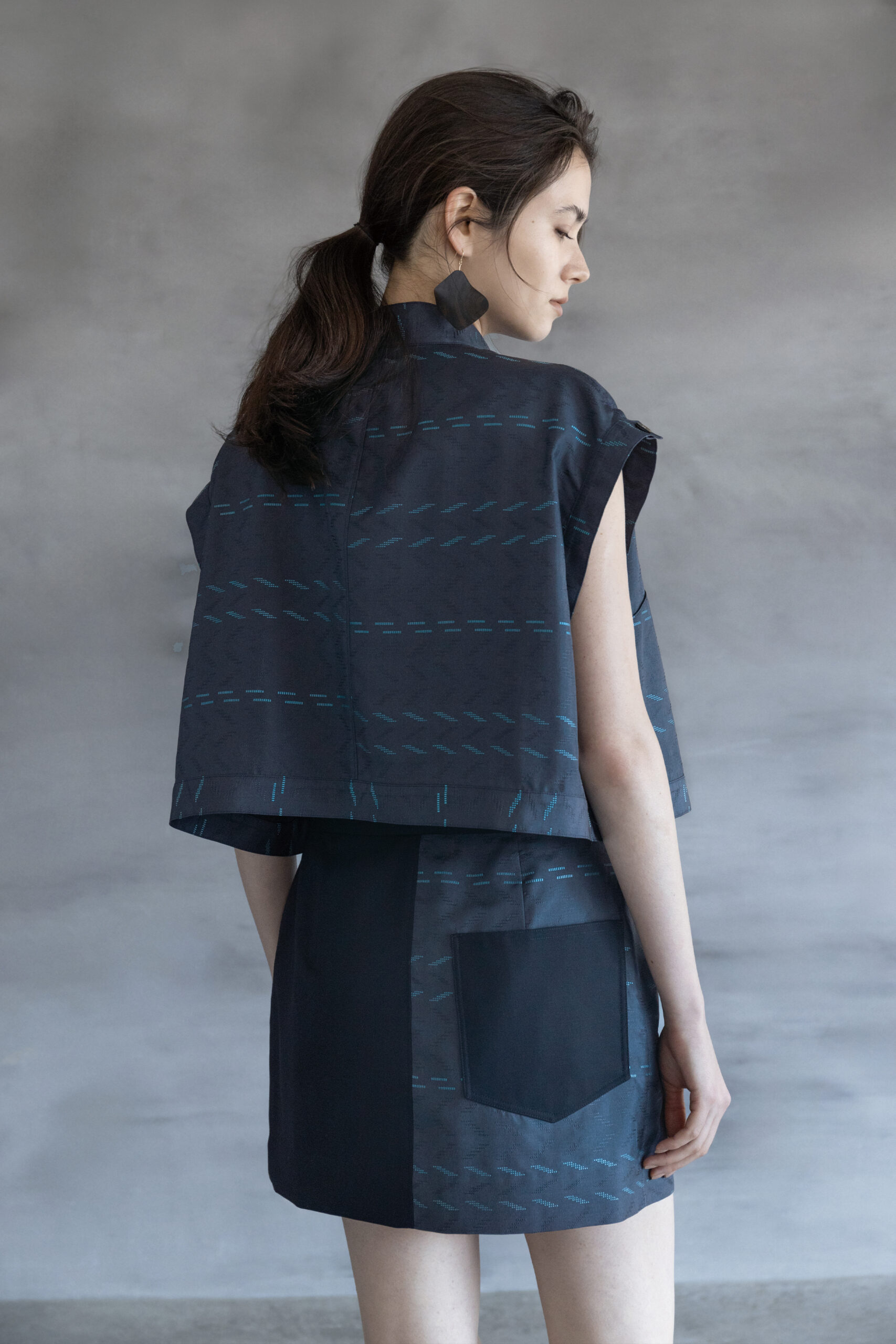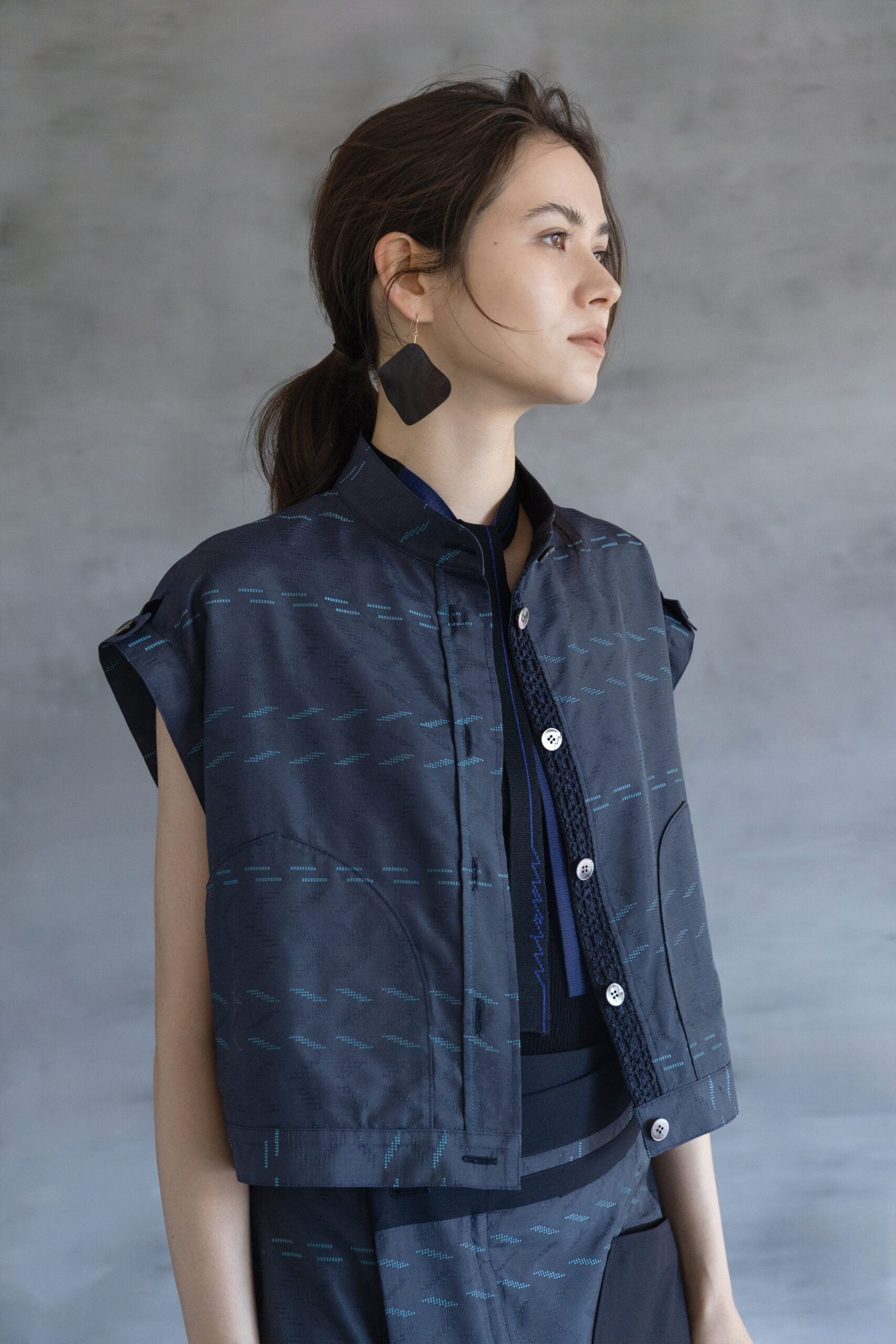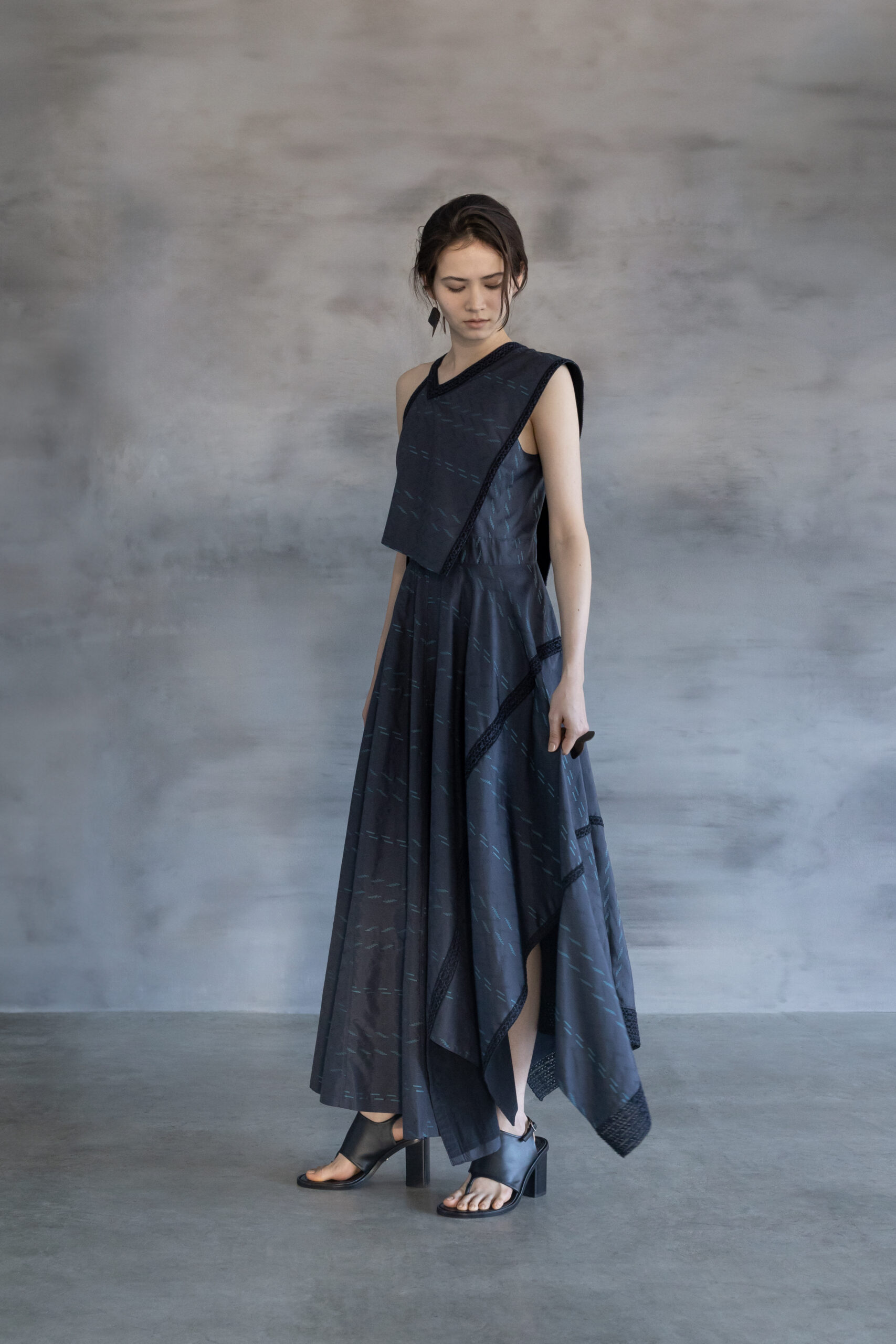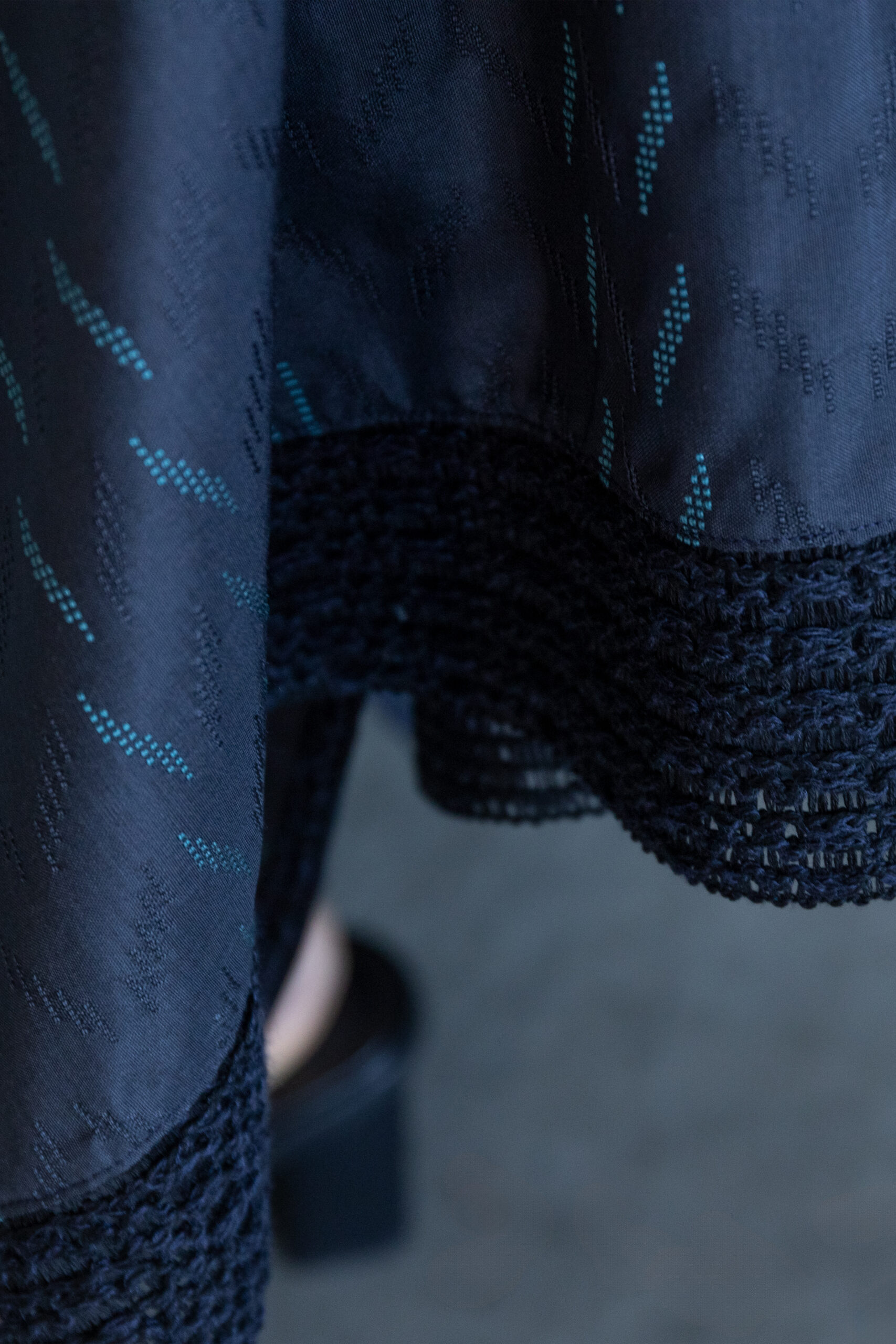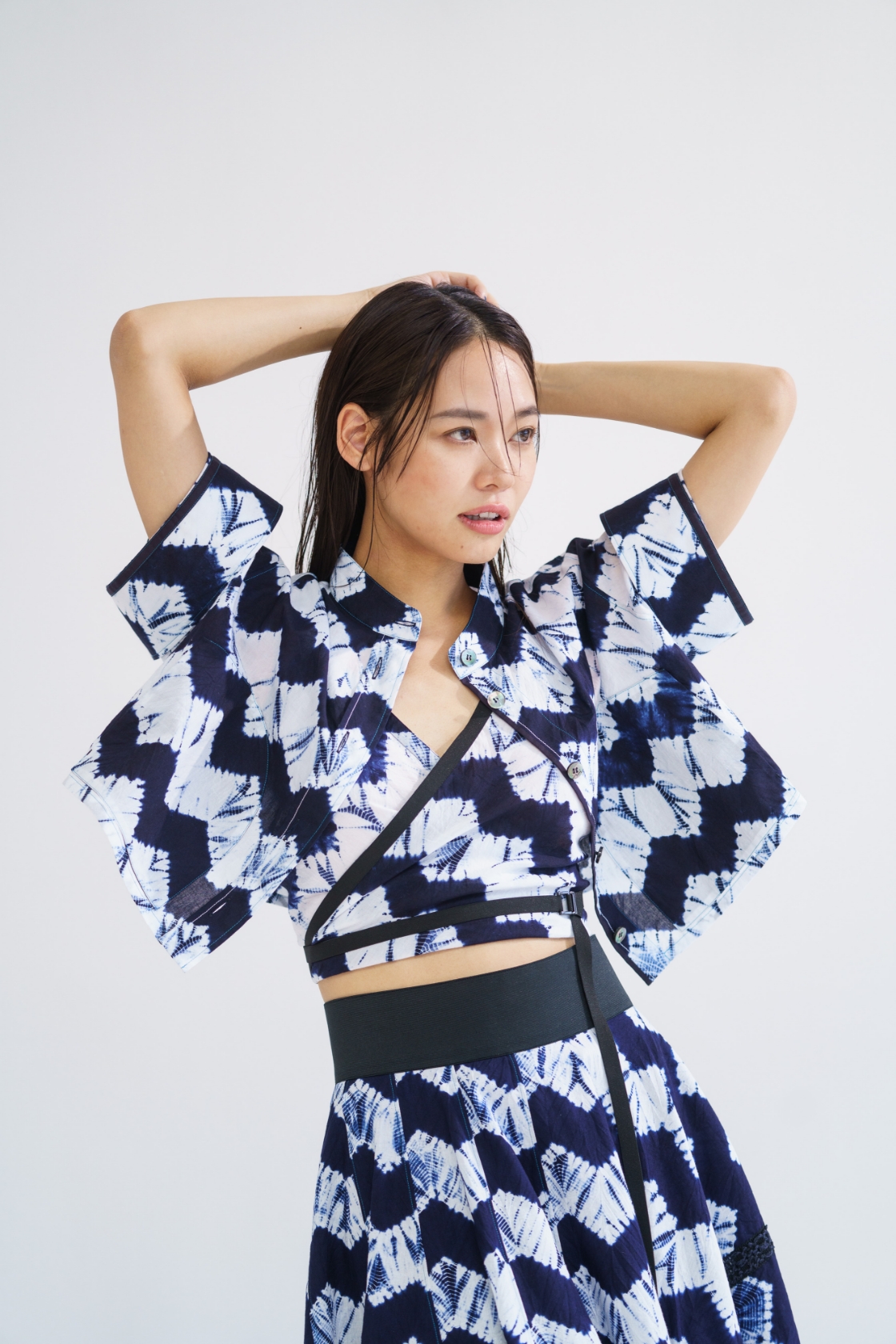HAEBARU HANA ORI
OKINAWA PREF.
"HAEBARU HANA ORI" <OKINAWA PREF.>
Crafted with the Tropical Breeze: The Allure of Flower Float Jacquard
Haebaru Hanaori, a tradition passed down from parent to child since the 19th century,
saw a significant development in 1914 with the establishment of the Haebaru Village Supplementary School.
There, many women learned the art of Hanaori weaving. The techniques learned at the school merged with the
ancestral Hanaori weaving techniques and evolved into a unique craft.
After the Second World War, the survivors, in the midst of poverty, gathered various materials and
dedicated themselves to reviving the production of textiles. And even today, the weaving continues,
constantly improved to meet the needs of the present.

Binding
The warp threads are starched and stretched, followed by a process known as " Shinshin-gake".
For the weft threads, a technique of hand-binding with seed threads is used.
After the seed threads are combined, they are bundled and tied with cotton thread, all done by hand.
A distinctive feature of Haebaru Kasuri patterns is the application of ear marks (mimi-jirushi) at both edges of the weave.
By binding and dyeing certain sections of the thread, the bound areas resist the dye and remain white,
forming the Kasuri patterns. It should be noted that the term "kasuri" is derived from the Japanese word "kasureta,"
which means "blurred," reflecting the appearance of the patterns.
Dyeing
A variety of colors are achieved by using natural dyes from Okinawan plants such as
Fukugi and Gettou mixed with chemical dyes. The dyeing process involves
imagining the superimposition of warp and weft threads and adjusting the hues and intensity accordingly.
Weaving
The weft threads are placed on a shuttle and woven by alternating the heddles.
Where the weft Kasuri is to be inserted, the marks on both edges are aligned,
and for the hanaori pattern areas, a special heddle is used to pass the weft threads through,
making the pattern appear to float and stand out.
In the areas where the weft kasuri is inserted, the marks on both ends are aligned,
while for the patterned areas called hanaori, a special heddle is chosen to pass the weft threads through.
Tebanaori (Hand-woven Hanaori)
In this technique, the pattern threads are sewn by hand to create designs.
Using colored threads called "Hana Ito", the process involves hooking onto the warp threads
and securing with the weft threads. This Tebanaori technique allows the weaving of
various patterns in any desired location and color, and requires an advanced level of skill.
